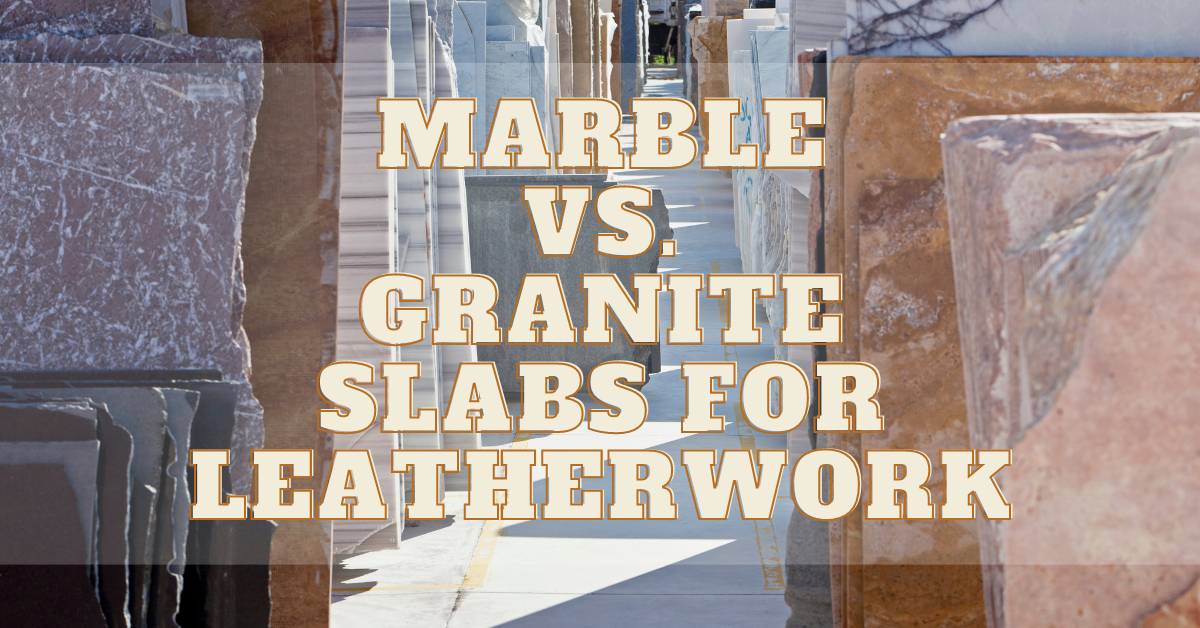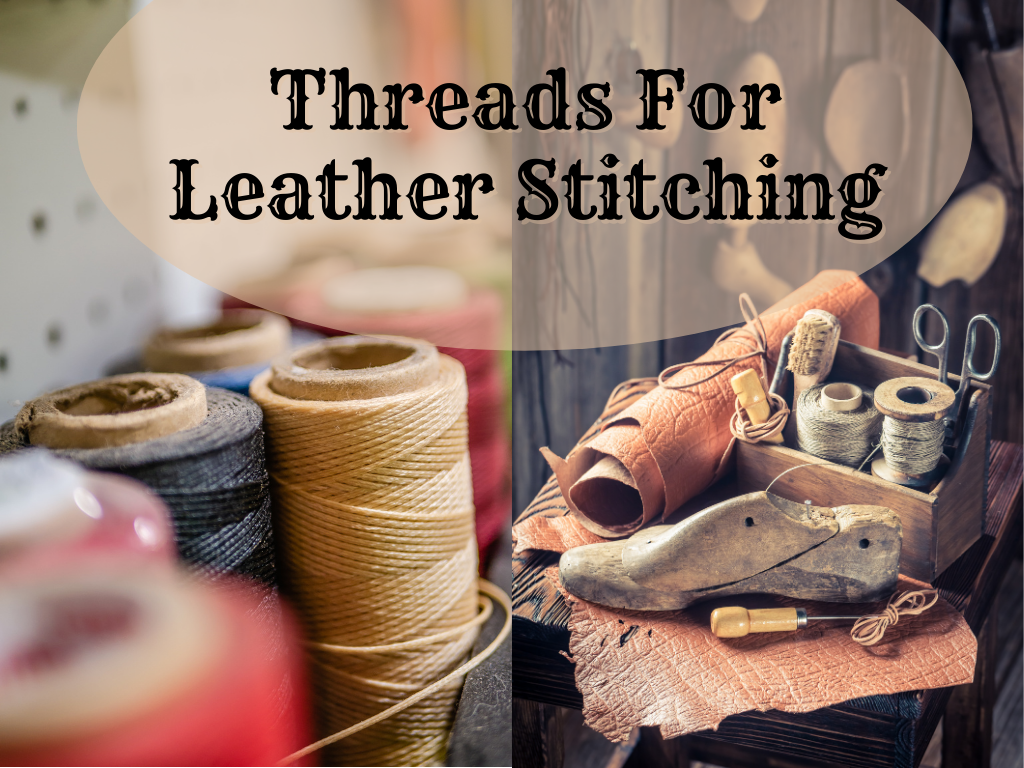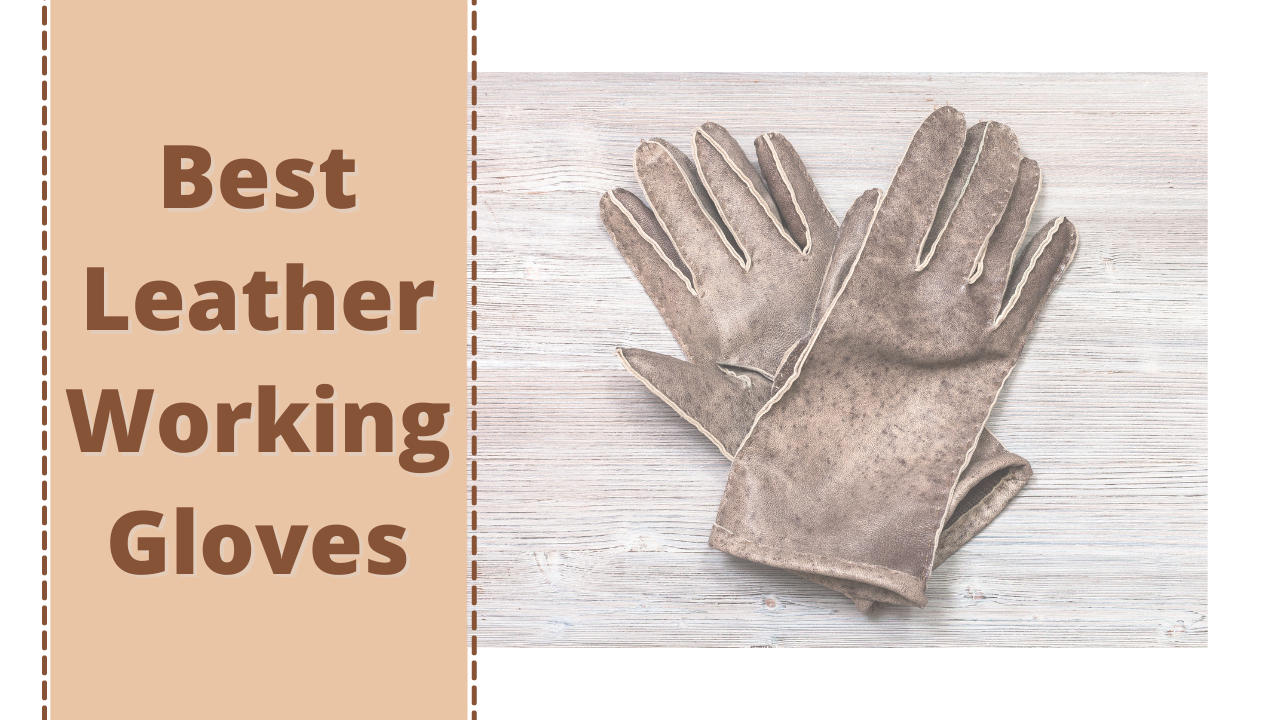For leatherworkers, having a durable slab where they can do their leather tooling and other leatherworking techniques is an essential. Leatherworkers use a slab for several reasons, mainly for protecting the surface of their work tables and workstations while they are busy honing their craft or working on some leather pieces. Two of the most commonly used slabs for leatherworking are marble and granite. Both have different qualities and both are widely used in leatherworking. Thus, it can be a bit hard to choose between the two because they seem to offer the same qualities.
Which is better for leatherwork, marble or granite? Granite is much better than marble because it requires not a lot of maintenance, is heat resistant, and is much more durable than marble. It is also a good option for those who appreciate aesthetics in workstations.
This article will discuss the pros of using marble as slab for leatherworking. We will also discuss the advantages of using granite as a slab for leatherworking. We will also compare the two materials in terms of aesthetics, durability, and upkeep and maintenance. Lastly, we will also provide some tips leatherworkers can find in handy when looking for a leatherworking slab.
Pros Of Using Marble As Slab For Leatherwork
Some people prefer using marble as a slab for their leatherworking projects. Here are some of the reasons behind their choice.
More Durable Than Any Other Slab Material
There are times that we strike the leather a bit too hard and we wonder if the slab can handle it. Marble slabs are known to handle the striking from the mallet to the leather tools due to its very hard and solid composition.
Marble and granite are two of the best materials for leather slabs but in terms of resistance, marble wins in this round. Marble might be heavier than granite slabs but we can assure everyone that we can see ourselves using the same marble slab for the years to come.
Aesthetically Pleasing To The Eyes
If we are aiming for a workstation that is pleasing to the eye but does not compromise the quality of work that we will be doing there in the future, using a marble slab might be the best idea for us.
Marble slabs come in so many colors — from the usual white to black to gray and even green and light blue. The marble slab sitting on the working table can effectively enhance the overall appearance of the workstation by several notches.
Also, marble slabs are usually polished and more refined to look at compared to other slabs used for leatherworking in general.
Can Stand The Test Of Time
Among the many known materials for slabs used in leatherworking, marble and granite are known to last for a long time. Unlike other rocks that might get broken due to consistent striking and close contact to shock, marble is known to last a long time, if not a lifetime.
It is also sturdy and gets little damage from long time use. We will not see any obvious chips or breakage if we use it several times, and marble is too thick and compact to get ruined in an instant. Marble countertops last a long time for a reason, and that also applies to marble slabs in leatherworking.
Pros Of Choosing Granite Slabs For Leatherwork
Still, there are other people who choose to use granite slabs for their leatherworking activities. Here are some of the reasons why.
Much More Durable Than Marble
Even though marble is a very durable material for leatherworking slabs, none can ever match the durability of granite as a leatherworking slab.
Both are made of rocks, but granite is more durable than marble. It can withstand consistent striking and close contact to the leatherworking tools. It also prevents the leather from slipping or going anywhere while the leatherworker is working on the leather piece.
That is the usual purpose of leatherworking slabs but granite does it even better, showing how it can be an indispensable piece in a leatherworking workstation.
More Heat Resistant Than Marble
Aside from its known durability, granite is also more heat resistant compared to marble. Granite resists easily to heat up to temperatures of 248°C, and can even likely withstand temperatures shooting up to 650°C.
There is a reason why most kitchens prefer having granite countertops rather than any other material. Granite is more likely to resist heat resistance compared to other materials. This is important because sometimes, heat can develop especially if there is friction between leather and the slab where it was lying down while the leatherworker works on it.
Resistant To Dyes, Glues, Chemicals, And Other Substances
One of the selling points of granite as leatherworking slabs is that it is resistant to other chemicals applied onto leather.
There are times that the leatherworker would apply glue to attach two pieces together. Sometimes, the leatherworker would also apply dyes to enhance the appearance of the leather hide.
There are other leatherworkers who also apply varnishes and other chemicals to improve the overall quality of the leather, and most of the time, they do it on top of the slab they use for leatherworking.
Granite provides the leatherworker assurance that it will not break down or sustain any damage because of the chemicals being applied to the leather on top of it.
Granite Slabs Are Also Easy To Maintain
Aside from the fact that it is resistant to chemicals, granite slabs are also easy to maintain unlike marble. Granite is stain, scratch, and heat resistant. It is known as one of the hardest materials available for leatherworking slabs.
It does not need sealing or any other special maintenance technique because we will not eat on top of it. It is a resilient material which is perfect for leatherworking, especially leather tooling.
Which One Is The Better Leatherworking Slab?
Now that we saw the different merits of using both marble and granite as leatherworking slabs, let us compare them based on a few focus points.
Low Maintenance: Granite Wins
Between the two, granite requires lesser maintenance compared to marble as a suitable leatherworking slab.
Due to its lighter color compared to granite, marble tends to show its flaws and imperfections much more prominently. For example, if someone spills some chemicals on it, the spill would be noticeable because of marble’s paler colors.
Also, granite does not require the leatherworker to wipe something on it or to do some techniques to maintain its outer appearance. Most leatherworkers want a slab that does not require them to spend a lot of time in maintaining it, so granite is the more suitable choice for this one.
Durability And Resistance: Granite Wins
Granite and marble are two very durable materials. That is why a lot of houses use either marble or granite for their floors and kitchen countertops.
In leatherworking, granite is more durable than leather because it can withstand consistent hitting and striking. Granite’s rock formation is more compact and solid compared to marble.
Granite is also heat-resistant, and is also resistant to chemicals, dyes, varnishes, paints, and other liquids that can already dent a marble slab’s outer appearance. Granite easily wins in this one because it has a lot more advantages than marble.
Aesthetics and Appearance: Both Wins
Marble and granite are undeniably beautiful rocks, and houses use them to decorate their spaces for a reason. Marble’s delicate patterns are totally beautiful, while granite presents a more resilient and patterned design, thanks to the way the rock is formed.
Anyone can put them in their leatherworking workstations and not regret their decision. They are both beautiful materials and they can both bring different types of beauty and aesthetics on it.
Tips On Finding The Best Leatherworking Slab
We all know that having a good quality leatherworking slab is important as it affects the quality of a leatherworker’s craft. Here are some cool tips and tricks on finding the best leatherworking slab.
Consider The Durability And Stability Of The Leatherworking Table
Before they buy a leatherworking slab for their workstation, a leatherworker should check if the table can handle the additional weight of the slab.
Remember that slabs are very heavy, and if placed on a flimsy table with weaker materials, it will not be able to hold up the weight of the slab. Thus, it will fall and damage the table. If the table used in leatherworking is a durable one, made of good quality wood or stone, then it would be able to handle the weight of the slab, be it marble or granite.
Slabs are heavy so make sure that the table where the slab is going to rest is stable enough to handle the sudden weight.
A Leatherworking Slab Should Not Be Too Thick
Having a thick leatherworking slab will make a better choice in leatherworking, given the amount of striking and blunt force it is going to sustain while the leatherworker is working on his piece. However, as far as the thickness goes, it is ideal to pick a slab that is anything not more than six inches.
Keep in mind that the thicker the slab is, the better because the striking activities will not be disturbed in any way. The leatherworker will not experience any bounce or whatsoever to the striking tools.
It is important to remember that this tip is to prevent the additional price and struggles in shipping for the granite or marble slab. Of course, if the slab is thicker, it is also heavier, so there would be additional fees needed to be shouldered by the customer to get it shipped to their house.
Slabs Can Be Obtained For Free
Of course, we saved the best tip for last. Some leather workers take advantage of the hardware stores when they trash marble or granite cutouts from the tiles and flooring were cut.
One can easily go to the nearest Home Depot and ask if they have marble or granite cutouts they can buy for cheap or get for free. Most of the time, they give it to the leatherworker for free since it will not be functional for them, anyway. However, for some, they sell it to a much cheaper price, cheaper than buying a newly cut slab.
Of course, the leatherworker is responsible for preparing the slab they got for free in the hardware store, which is a good price to pay for a high quality slab they can use for their craft.
Conclusion
Having a leatherworking slab of good quality is very important when it comes to having good quality work. Marble and granite are two of the most common choices among leatherworkers and enthusiasts for different reasons, but mostly due to durability and stability. Granite is much better to use because aside from being a durable material, it is also resistant to so many factors and it requires little maintenance to the leatherworker without compromising the appearance of it. Either way, it is a must to have a slab for reducing inertia and putting the leather in place.















